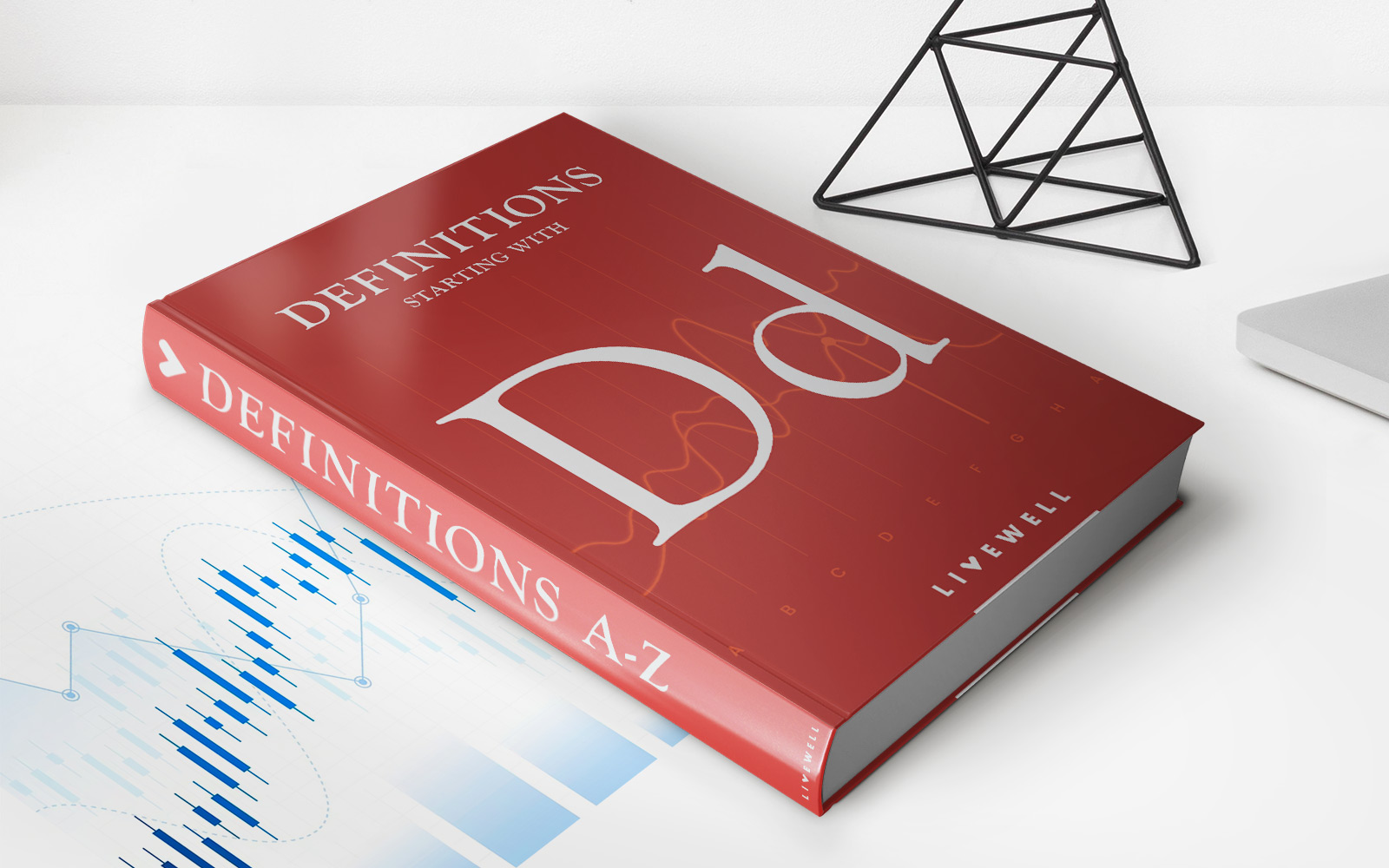

Finance
What Happens To Your 401K When You Quit A Job
Modified: February 21, 2024
Discover what happens to your 401K when you leave a job. Gain insights on managing your finances during job transitions.
(Many of the links in this article redirect to a specific reviewed product. Your purchase of these products through affiliate links helps to generate commission for LiveWell, at no extra cost. Learn more)
Table of Contents
- Introduction
- Understanding 401K Plans
- Vesting in a 401K Plan
- Options for Your 401K When Quitting a Job
- Leaving Your 401K with the Employer
- Rolling Over Your 401K to a New Employer
- Rolling Over Your 401K to an Individual Retirement Account (IRA)
- Withdrawing Your 401K as a Lump Sum
- Tax Implications of Different 401K Options
- Factors to Consider Before Making a Decision
- Conclusion
Introduction
When it comes to planning for retirement, one of the most common investment tools available is a 401K plan. A 401K is a retirement savings account offered by employers to their employees, allowing them to contribute a portion of their salary towards their future financial security. However, what happens to your 401K when you quit a job? This is a question that many individuals find themselves asking when transitioning to a new job or exiting the workforce altogether.
In this article, we will explore the various options available for your 401K when you leave a job and delve into the implications of each choice. It’s important to note that the decision you make regarding your 401K can significantly impact your retirement savings, so understanding the available options and considering the long-term financial implications is crucial.
Whether you’re retiring, changing jobs, or embarking on a new career path, understanding what happens to your 401K is essential. We will discuss the concept of vesting and how it relates to a 401K plan, as well as the different options you have when it comes to managing your 401K funds. From leaving your 401K with your former employer to rolling it over to a new employer’s plan or an individual retirement account (IRA), each choice presents different advantages and considerations.
Additionally, we will explore the option of withdrawing your 401K as a lump sum. While this may be tempting, it’s important to understand the potential tax implications and penalties associated with such a decision. By evaluating the various options and their potential benefits and drawbacks, you can make an informed decision that aligns with your long-term retirement goals.
Before diving into the specifics of each option, it’s important to note that this article is for informational purposes only and should not be interpreted as financial or investment advice. Consulting with a financial advisor or retirement planner is highly recommended to ensure that the decision you make regarding your 401K aligns with your unique financial situation and retirement goals.
Now, let’s explore the world of 401K plans and the various options available to you when leaving a job.
Understanding 401K Plans
Before we dive into what happens to your 401K when you quit a job, it’s important to have a clear understanding of what exactly a 401K plan is. A 401K is a type of retirement savings plan that is sponsored by an employer. It allows employees to contribute a portion of their pre-tax income towards their retirement savings. The contributions are then invested in a variety of assets such as stocks, bonds, and mutual funds, with the goal of growing the retirement savings over time.
One of the key advantages of a 401K plan is that contributions are made on a pre-tax basis. This means that the money you contribute to your 401K is deducted from your taxable income, thereby lowering your current tax liability. Additionally, many employers offer a matching contribution, where they will match a certain percentage of an employee’s contributions, up to a certain limit. This is essentially free money that can significantly boost your retirement savings.
Another important aspect of 401K plans is the concept of vesting. Vesting refers to the ownership of the employer’s contributions to your 401K. In other words, once you are fully vested, you have 100% ownership of the employer’s contributions, regardless of whether you continue working for that employer or not. On the other hand, if you are not fully vested, you may only have partial ownership of the employer’s contributions and may forfeit some or all of them if you leave the company before reaching full vesting.
Now that we have a basic understanding of what a 401K plan is, let’s explore the various options you have when it comes to managing your 401K after leaving a job.
Vesting in a 401K Plan
When it comes to understanding what happens to your 401K when you quit a job, one important factor to consider is the concept of vesting. Vesting determines your ownership of the employer’s contributions to your 401K plan and is typically based on the number of years you have worked for the company.
There are two types of vesting schedules commonly used by employers: cliff vesting and graded vesting. With cliff vesting, you become fully vested in the employer’s contributions after a specified number of years of service, typically three to five years. This means that once you reach the cliff vesting milestone, you have 100% ownership of the employer’s contributions, regardless of whether you stay with the company or not.
On the other hand, graded vesting allows for a partial vesting of the employer’s contributions over a period of time. For example, a graded vesting schedule might grant you 20% ownership after two years of service, 40% after three years, and so on, until you reach 100% ownership after five or six years of service.
It’s important to review your specific employer’s 401K plan document to understand the vesting schedule applicable to your plan. This will give you insight into how much of the employer’s contributions you will have ownership of if you decide to leave the company before reaching full vesting.
It’s worth noting that contributions made by the employee, whether in the form of pre-tax contributions or after-tax Roth contributions, are always 100% vested. This means that you have full ownership of your own contributions, regardless of how long you have been with the company.
Understanding the vesting schedule is crucial when making decisions about what to do with your 401K after leaving a job. If you are fully vested, you have complete control over the employer’s contributions and can choose from a range of options. However, if you are not fully vested, you may need to consider the potential impact on your retirement savings and factor that into your decision-making process.
In the next section, we will explore the various options available to you for managing your 401K when you quit a job.
Options for Your 401K When Quitting a Job
When you leave a job, you have several options when it comes to managing your 401K. It’s essential to understand these options and carefully consider the potential benefits and drawbacks of each one before making a decision.
1. Leaving Your 401K with the Employer:
One option is to leave your 401K funds with your former employer. This is known as “keeping it with the old plan.” By doing so, you retain the benefits of the existing investment selections and any employer matching contributions you may have accrued. However, it’s important to note that not all employers allow this option. You should check with your employer’s 401K plan administrator to verify whether you can leave your funds in the old plan.
2. Rolling Over Your 401K to a New Employer:
If you’re moving to a new job that offers a 401K plan, you can choose to roll over your 401K funds into the new employer’s plan. This can consolidate your retirement savings into a single account, making it easier to manage. It’s important to review the investment options and fees of the new plan before making a decision, as they may differ from your previous plan.
3. Rolling Over Your 401K to an Individual Retirement Account (IRA):
Another option is to roll over your 401K funds into an individual retirement account (IRA). This provides greater control and flexibility over your investments, as you can choose from a wider range of investment options compared to a 401K plan. Additionally, an IRA allows for potential tax advantages and may have lower fees compared to a 401K plan. However, it’s important to consider the tax implications and potential penalties associated with an IRA rollover.
4. Withdrawing Your 401K as a Lump Sum:
The final option is to withdraw your 401K funds as a lump sum. While this may seem tempting, there are significant tax implications and potential penalties associated with early withdrawals. If you withdraw the funds before the age of 59½, you may be subject to a 10% early withdrawal penalty in addition to regular income taxes. It’s important to carefully evaluate your financial situation and consult with a financial advisor before considering this option.
Each option has its own set of advantages and considerations, and what works best for you will depend on your individual circumstances. It’s recommended to carefully review and compare the options, considering factors such as investment choices, fees, tax implications, and long-term retirement goals.
Now that we’ve explored the various options for managing your 401K when quitting a job, let’s delve deeper into each option in the following sections.
Leaving Your 401K with the Employer
One option to consider when leaving a job is leaving your 401K funds with your former employer. This means keeping your retirement savings in the existing 401K plan and continuing to benefit from the investment selections and any employer matching contributions you may have accumulated.
There are several factors to consider when deciding whether to leave your 401K with your employer:
1. Investment Selections:
One advantage of leaving your 401K with your employer is that you can continue to access the existing investment options offered by the plan. This can be beneficial if your employer’s plan offers a diverse range of investment choices and you are satisfied with your current investment strategy. However, it’s important to review the performance and fees associated with these options to ensure they align with your long-term financial goals.
2. Employer Matching Contributions:
If your employer offers matching contributions to your 401K, leaving your funds with the old plan allows you to retain these contributions. Depending on the vesting schedule, you may be entitled to 100% ownership of the employer’s contributions or a percentage based on the number of years of service. It’s important to understand the vesting rules of your employer’s plan and factor this into your decision-making process.
3. Ease of Management:
By leaving your 401K with your former employer, you can keep your retirement savings consolidated in one account. This can make it easier to manage your investments and monitor their performance. However, it’s important to ensure that you stay updated on any changes or updates to the plan and review the associated fees.
4. Restrictions and Limitations:
It’s important to note that not all employers allow former employees to leave their 401K funds in the old plan. Some companies may have a policy that requires employees to transfer their funds out of the plan after leaving the company. Before making a decision, you should check with your employer’s 401K plan administrator to determine if leaving the funds with the old plan is an available option.
5. Future Accessibility:
Leaving your 401K with your employer may limit your future accessibility to the funds. For example, if you need to take a loan from your retirement savings or make a hardship withdrawal, some employer plans may not allow such options for former employees. If access to your retirement savings is an important consideration, you may want to explore other options, such as rolling over the funds into an IRA.
Leaving your 401K with your employer can be a viable option if you are satisfied with the investment choices, want to retain any employer matching contributions, and find it convenient to manage your retirement savings in one account. However, it’s important to consider the long-term implications and compare this option with others, such as rolling over to a new employer’s plan or an individual retirement account (IRA).
Now, let’s move on to exploring the option of rolling over your 401K to a new employer’s plan.
Rolling Over Your 401K to a New Employer
When you switch jobs and have a new employer that offers a 401K plan, one option is to roll over your 401K funds from your previous employer’s plan into the new plan. This can be an attractive choice as it consolidates your retirement savings into a single account and allows you to continue saving for the future.
Here are some key points to consider when rolling over your 401K to a new employer:
1. Consolidation of Retirement Savings:
Rolling over your 401K to a new employer’s plan allows you to consolidate your retirement savings into one account. This can simplify the management of your investments and make it easier to track your progress towards your retirement goals. It can also help you avoid having multiple retirement accounts with different investment strategies.
2. Potential Employer Matching Contributions:
By rolling over your 401K to a new employer’s plan, you may become eligible for any matching contributions offered by the new employer. Matching contributions can significantly boost your retirement savings as it is essentially free money. Make sure to familiarize yourself with the matching contribution policy of the new employer and take advantage of this benefit if available.
3. Investment Options and Fees:
Before deciding to roll over your 401K, it’s important to review the investment options and fees associated with the new employer’s plan. Different plans may offer varying investment choices and have different fee structures. Take the time to assess if the investment options align with your financial goals and if the fees are reasonable. It’s crucial to carefully consider these factors to ensure your retirement savings are being managed effectively.
4. Vesting Schedule:
If your new employer offers a matching contribution, it’s essential to understand the vesting schedule of the new plan. Vesting determines your ownership of the employer’s contributions, and it may take time before you become fully vested. Be aware of the timeline for reaching full vesting, as it can impact your decision whether to roll over your 401K or not.
5. Future Flexibility:
Rolling over your 401K to a new employer’s plan may limit your future flexibility in accessing the funds. Some plans have specific rules and restrictions on taking loans or making hardship distributions. If the accessibility to your retirement savings is an important consideration, you may want to explore other options, such as rolling over the funds into an individual retirement account (IRA).
It’s important to note that not all employers allow incoming rollovers from previous 401K plans. Before making a decision, check with the new employer’s HR department or plan administrator to ensure that rolling over your funds to the new plan is an available option.
Rolling over your 401K to a new employer’s plan can be a beneficial choice if the investment options are suitable, and if the plan offers competitive fees and matching contributions. Consider your long-term financial goals and evaluate the advantages and disadvantages of consolidating your retirement savings in the new plan.
In the next section, we will explore the option of rolling over your 401K to an Individual Retirement Account (IRA).
Rolling Over Your 401K to an Individual Retirement Account (IRA)
When you leave a job and want to explore more investment options and greater control over your retirement savings, rolling over your 401K to an Individual Retirement Account (IRA) can be a viable option. An IRA offers more flexibility in investment choices and can provide potential tax advantages for your retirement savings.
Here are key points to consider when rolling over your 401K to an IRA:
1. Investment Flexibility:
An IRA offers a wide range of investment options beyond what may be available in a 401K plan. With an IRA, you can choose individual stocks, bonds, mutual funds, exchange-traded funds (ETFs), and other investment vehicles. This flexibility allows you to create a more customized investment portfolio that aligns with your risk tolerance and financial goals.
2. Potential Tax Advantages:
Depending on the type of IRA you choose, there may be potential tax advantages. Traditional IRAs offer tax-deferred growth, meaning your contributions and investment earnings are not taxed until you make withdrawals in retirement. Roth IRAs, on the other hand, allow for tax-free withdrawals in retirement, as contributions are made with after-tax dollars. Understanding the tax implications and consulting with a tax advisor can help determine which IRA option is most beneficial for your specific circumstances.
3. Control and Flexibility:
By rolling over your 401K to an IRA, you gain more control and flexibility over your retirement savings. You can choose the financial institution where you want to open your IRA and have the ability to move funds between different investments as your investment strategy evolves. This allows you to adapt to changing market conditions and take advantage of new investment opportunities.
4. Consolidation of Retirement Accounts:
If you have multiple retirement accounts from previous employers, rolling over your 401K to an IRA can help consolidate your savings into one account. This simplifies the management of your retirement funds and makes it easier to track your progress towards your financial goals.
5. Consider Costs and Fees:
Before rolling over your 401K, it’s essential to consider the costs and fees associated with opening and maintaining an IRA. Some financial institutions may charge account maintenance fees, transaction fees, or commissions for certain investment options. Compare fees among different providers to ensure you choose an IRA with reasonable costs that align with your budget.
When initiating a 401K rollover to an IRA, it’s important to follow the proper process to ensure a smooth transition. This typically involves initiating a direct rollover, where the funds are transferred directly from the 401K plan to the new IRA custodian, to avoid potential tax penalties.
Ultimately, rolling over your 401K to an IRA offers greater investment flexibility, potential tax advantages, and more control over your retirement savings. However, it’s crucial to consider the long-term implications and compare the fees, investment options, and tax aspects of both your 401K and potential IRA.
In the next section, we will explore the option of withdrawing your 401K funds as a lump sum.
Withdrawing Your 401K as a Lump Sum
While not recommended for most individuals, one option available when leaving a job is to withdraw your 401K funds as a lump sum. This means taking the entire balance of your 401K account in one single payment. However, it’s important to carefully consider the potential consequences of this decision before proceeding.
Here are some key factors to consider before withdrawing your 401K as a lump sum:
1. Tax Implications:
Withdrawing your 401K as a lump sum comes with immediate tax implications. The amount withdrawn will be subject to mandatory income tax withholding, which can significantly impact the size of your payment. Additionally, if you’re under the age of 59½, you may be subject to a 10% early withdrawal penalty on top of the regular income tax. It’s crucial to calculate the potential tax liabilities and understand the impact on your overall financial situation.
2. Loss of Future Growth:
By withdrawing your 401K as a lump sum, you give up the opportunity for future growth and compounding of your retirement savings. The funds that you withdraw will no longer be invested in the market, and the potential for long-term growth may be lost. This can have a significant impact on your retirement savings and may make it more challenging to achieve your long-term financial goals.
3. Impact on Retirement Readiness:
Withdrawing your 401K as a lump sum can have a detrimental effect on your retirement readiness. The amount you receive may seem substantial at the moment, but it may not be enough to sustain your desired lifestyle throughout your retirement years. It’s important to evaluate your future financial needs and consider whether a lump sum withdrawal aligns with your retirement goals.
4. Unforeseen Expenses:
If you choose to withdraw your 401K as a lump sum, it’s crucial to have a plan in place for handling the funds. Without a clear financial strategy, there is a risk of overspending or mismanaging the money, which could lead to financial difficulties down the road. Assess your financial situation, establish a budget, and consider working with a financial advisor to ensure you make the most of your retirement savings.
5. Alternatives to Meet Immediate Needs:
If you have an immediate financial need, withdrawing your entire 401K balance may not be the most suitable solution. Consider alternative options, such as taking a loan against your 401K (if allowed by the plan) or exploring other sources of short-term funding. These alternatives can help you address immediate financial concerns without sacrificing the potential growth and long-term benefits of your retirement savings.
While there may be specific circumstances where withdrawing your 401K as a lump sum is necessary, it’s generally recommended to explore other options that allow you to keep your retirement savings intact. Withdrawing your 401K as a lump sum should be a last resort and carefully evaluated in light of the potential tax consequences and long-term impact on your financial security.
Now that we’ve explored the option of withdrawing your 401K as a lump sum, let’s move on to discussing the tax implications of the different 401K options.
Tax Implications of Different 401K Options
When considering what to do with your 401K when you leave a job, it’s essential to understand the tax implications of each option. The decisions you make regarding your 401K can have significant implications on your current and future tax obligations.
1. Leaving Your 401K with the Employer:
If you choose to leave your 401K with your former employer, there are no immediate tax consequences. Your retirement savings remain invested in the 401K account and continue to grow on a tax-deferred basis until you make withdrawals in retirement. However, it’s important to note that once you start taking distributions in the future, they will be subject to income tax at your ordinary tax rate.
2. Rolling Over Your 401K to a New Employer:
Rolling over your 401K to a new employer’s plan typically doesn’t have immediate tax consequences. The funds are transferred directly from the old plan to the new plan, preserving the tax-deferred status of the retirement savings. Like leaving your 401K with the employer, any future distributions from the new plan will be subject to income tax.
3. Rolling Over Your 401K to an Individual Retirement Account (IRA):
Rolling over your 401K to an IRA can offer potential tax advantages. If you choose a traditional IRA, the rollover is typically done on a tax-free basis, preserving the tax-deferred status of the funds. However, keep in mind that when you make withdrawals from a traditional IRA in retirement, they will be subject to income tax at your ordinary tax rate.
If you opt for a Roth IRA rollover, you will need to pay income tax on the amount rolled over in the year of conversion. After the conversion, future qualified withdrawals from the Roth IRA will be tax-free.
4. Withdrawing Your 401K as a Lump Sum:
Withdrawing your 401K as a lump sum has immediate tax implications. The funds withdrawn are considered taxable income for the year in which you receive them. You will have to pay federal income tax, and depending on your state, you may also owe state income tax on the distribution.
Additionally, if you’re under the age of 59½, you may be subject to a 10% early withdrawal penalty on top of the regular income tax. There are a few exceptions to the penalty, such as if you separate from service at age 55 or older, have certain medical expenses, or qualify for a hardship distribution under specific circumstances.
Understanding the tax implications of different 401K options is crucial for making informed decisions about your retirement savings. It’s recommended to consult with a tax advisor or financial professional to evaluate your specific situation and determine the most tax-efficient strategy for your unique circumstances.
Now that we’ve covered the tax implications, let’s move on to discussing the factors you should consider before making a decision regarding your 401K.
Factors to Consider Before Making a Decision
When deciding what to do with your 401K upon leaving a job, it’s important to carefully consider several key factors. By evaluating these factors, you can make an informed decision that aligns with your long-term financial goals and retirement objectives.
1. Retirement Goals:
Consider your retirement goals and how your decision regarding your 401K fits into them. Are you on track to meet your retirement savings targets? Will your decision help you achieve the lifestyle you envision during your retirement years? Understanding your retirement goals will guide your decision-making process.
2. Investment Options:
Evaluate the investment options available to you within your current 401K plan, the new employer’s plan (if applicable), or an Individual Retirement Account (IRA). Consider the diversification, performance, and fees associated with each option. Choose investment vehicles that align with your risk tolerance and provide a reasonable chance of achieving your financial objectives.
3. Tax Implications:
Understand the tax implications of the different options available to you for managing your 401K. Consider the potential tax liabilities or advantages associated with leaving your funds with an employer, rolling them over to a new plan, or transferring them to an IRA. Consult with a tax professional to assess the impact on your tax obligations in the short and long term.
4. Fees and Expenses:
Review the fees and expenses associated with the various 401K options. Consider the administrative fees, investment management fees, and any other charges related to the accounts. Higher fees can erode your retirement savings over time, so choose options with reasonable costs that align with your financial situation.
5. Employer Matching Contributions:
If your current or new employer offers matching contributions, factor this into your decision-making process. Evaluate the vesting schedule to determine your ownership of these contributions and weigh their impact on your retirement savings. Take advantage of matching contributions as they represent an opportunity for significant growth in your retirement funds.
6. Accessibility to Funds:
Consider the accessibility to your funds based on the options available to you. Leaving your 401K with an employer or rolling it over to an IRA may provide more flexibility in accessing your savings when needed. On the other hand, some employer plans and IRAs may have restrictions and penalties for early withdrawals, so take into account your potential future liquidity needs.
7. Professional Guidance:
Consider seeking professional guidance from a financial advisor or retirement planner. They can provide personalized advice based on your specific financial situation, retirement goals, and investment preferences. A financial expert can educate you on your options, help you navigate the complexities of tax implications, and offer insights to make an informed decision.
By considering these factors before making a decision about your 401K, you can ensure that you are making a choice that aligns with your long-term financial well-being and retirement aspirations. Taking the necessary time and care to evaluate these factors will empower you to make the best decision for your future.
Now, let’s conclude our discussion on what happens to your 401K when you quit a job.
Conclusion
Deciding what to do with your 401K when you leave a job is an important step in planning for your future financial security. It’s crucial to understand the options available to you and the potential implications of each choice.
Leaving your 401K with your former employer may be a suitable option if you are satisfied with the investment options and want to retain any employer matching contributions. Rolling over your 401K to a new employer’s plan can consolidate your retirement savings and potentially unlock new matching contributions. Rolling over to an IRA provides more investment flexibility and potential tax advantages, but it’s essential to evaluate fees and tax implications. Withdrawing your 401K as a lump sum should generally be a last resort due to the tax consequences and potential loss of future growth.
Before making a decision, consider factors such as your retirement goals, investment options, tax implications, fees, accessibility to funds, and seek professional financial advice when needed.
Remember, every individual’s financial situation is unique, and what works for one person may not work for another. Take the time to evaluate your personal circumstances and align your decision with your long-term financial goals.
Ultimately, the goal is to make a decision that optimizes your retirement savings, keeps your investments on track, and sets you up for a financially secure future. Regularly review and reassess your retirement strategy as your circumstances change over time.
Keep in mind that this article provides general information, and it’s crucial to consult with a financial advisor or retirement planner for personalized advice that aligns with your specific needs and goals.
By being informed, proactive, and mindful of the options available to you, you can make confident decisions about your 401K and take steps towards building a solid foundation for your retirement.














